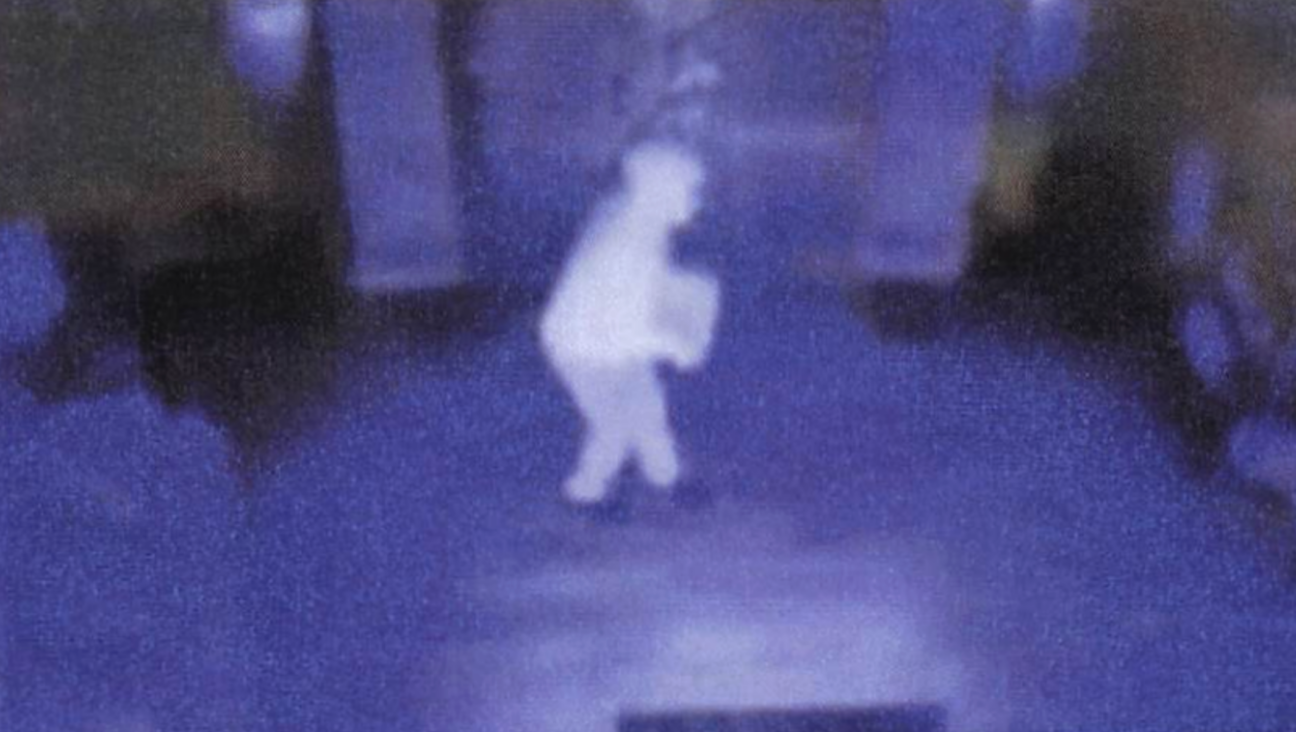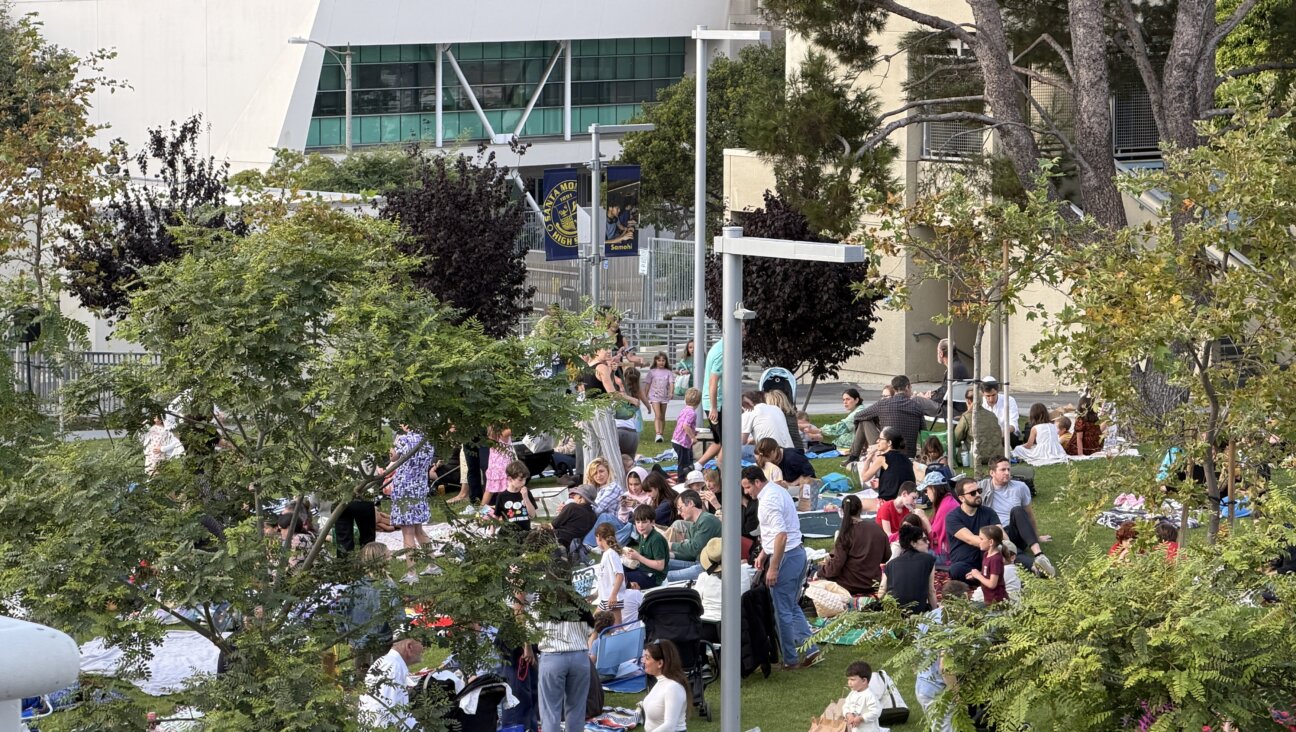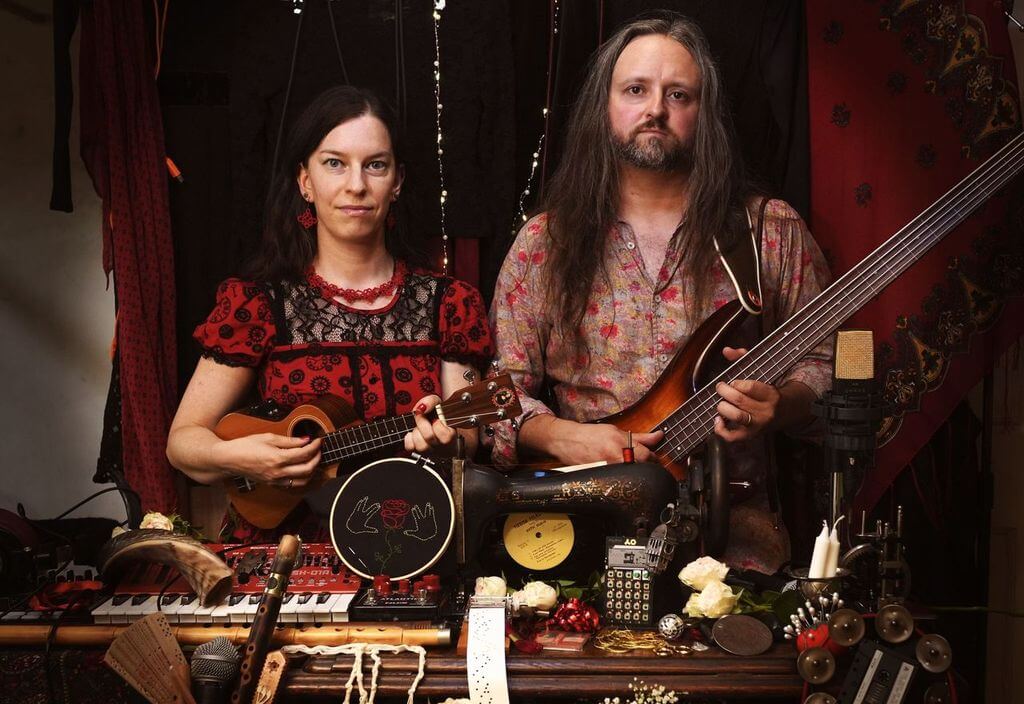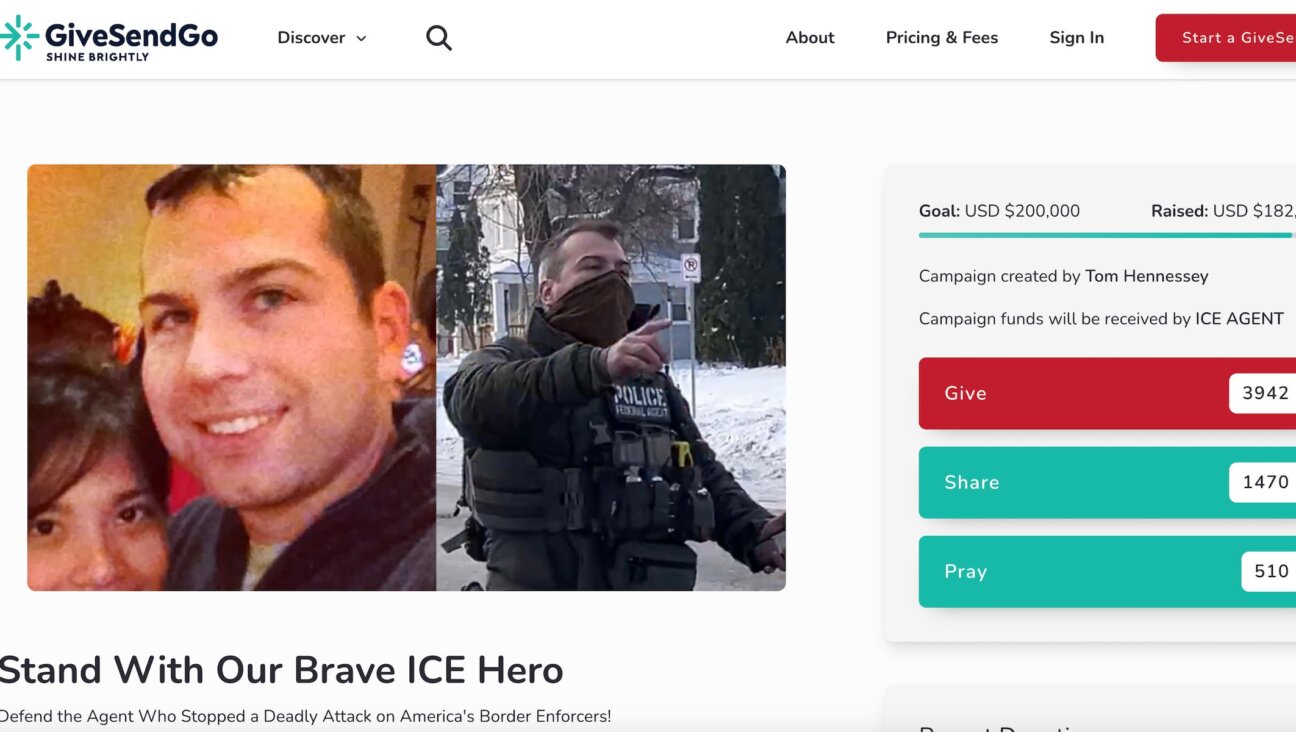Jews Must Take Mental Illness Out of the Shadows

Image by iStock
Last spring, I was standing at the front of a prominent East Coast synagogue with Patrick Kennedy — the former congressman and brain health advocate with whom I had recently written a book — when I had a moment of clarity.
We were discussing important national political issues in mental illness and substance use disorders, talking about medical discrimination and stigma and parity, and the need for congregations to do more outreach — all the big-picture social action stuff that the congregation and a major local treatment center had invited us to discuss. But I found myself wondering about something much more basic, and more personal.
What messages do we send to our congregations every day about mental illness and addiction? Do we, for example, believe in prayers for healing diseases of the brain the same way we do for all other diseases? Do we believe in mourning deaths from the tragic outcomes of these illnesses — suicides, overdoses — the same way we do for all other diseases? Do we regularly include these diseases in the “health” and “wellness” that we pray for and wish for others? Do our clergy and community members offer hospital or home medical visits for these illnesses?

If not, well, why the hell not? There is ample evidence that these are diseases like all the others for which we offer our sincerest sympathies. The theories too many of us were taught as kids, that these illnesses are somehow caused by faulty parenting, or reflect weakness or failure, have been thoroughly debunked.
And if we do believe in this equality — which, I suspect, in theory we do — then why in practice do we so rarely talk about the day-to-day medical challenges of depression, bipolar disorder, anxiety disorder, schizophrenia and all the substance use disorders? Why do we still whisper about mental illness the way we used to whisper about cancer? I mean, it’s more prevalent than cancer, with a much heavier disease burden(the measure of time lost to illness). Nearly 25% of Americans are personally affected by mental illness or addiction every day, and one-third of all U.S. hospital stays involve these diseases.
Yet today, if I said the name of a friend or family member with breast cancer during the Mi Shebeirach — the very public prayer for healing when the Torah is being read — and I was asked afterward what was wrong with him or her, I would have no problem telling the truth.
If I wanted to pray for a friend or family member who was depressed or manic, or pray to support someone who had a slip in recovery, I might consider it a personal betrayal — or at least a HIPAA violation — to mention the person’s name aloud.
The silence that pervades our synagogues is a proxy for the broader reluctance of patients and family members dealing with mental illness to seek comfort in life and openness in death.
As I was thinking about all this, I had an eerie experience. I looked away from Patrick and out into the audience, the way they teach you in public speaking class to get a little eye contact. And about 10 rows back, on the left-hand side of the sanctuary, I saw a ghost.
Actually, it was the younger brother of a ghost. It was a guy I hadn’t seen in many years. But when I was a kid, his brother had introduced me and everyone I knew to the concept of mental illness — by completing suicide on Yom Kippur, after his father had already left early for services but just in time for his mother and sibling to discover him. By the time families were reconvening all over my hometown of Harrisburg, Pennsylvania, to break the fast that evening, his death was all anyone talked about.
And then nobody ever talked about it again.
•
The deafening sound of not talking about brain diseases pervades American life. But it is nowhere more troubling — nor more potentially and profoundly reversible — than in our houses of worship and our faith communities.
In the past few years there has been an increase in what I would call “talking about talking about” this problem. But so far there hasn’t been enough broadly resonant sustained action. You can get synagogues, Jewish community centers and federation groups to schedule and fund a one-day event, a week-long campaign; you can get a house of worship to do a special sermon or short-term outreach during a suicide prevention, depression, mental health or recovery day, week or month.
In just the past few years there have been calls in many faith communities for “Sabbaths of Inclusion” for all brain diseases. New York City pulled off the biggest such event ever last spring — the Mental Health Weekend of Faith involving 1,000 houses of worship of almost every conceivable faith, over three days to include everyone’s Sabbath, combining scripture and the most modern neuroscience, psychiatry and psychology. (It was driven by the inspiring advocacy of the city’s first lady, Chirlane McCray, who has been very public about her daughter’s struggles with mental illness and addiction, and her parents’ struggles with depression.) Many ambitious national brain health organizations are developing faith community advocacy strategies, and some faith communities are starting to offer the secular Mental Health First Aid training from the National Council for Behavioral Health.
But so far this has all seemed like a litany of well-meaning, and even occasionally well-funded, first steps. It has proved nearly impossible to get most communities — or, frankly, most families — to view mental illness and addiction as daily, weekly, monthly, yearly, lifelong realities and medical illnesses. It is stunningly difficult.
I remember being a kid in the 1960s and early ’70s, when the only sign that congregations were really paying attention to equal rights for women was a once-a-year “Sisterhood Sabbath,” where ladies with hairdos like my mom, a Sisterhood president, were allowed, for one day, to do almost everything men did on the bimah.
In mental health and addiction, I think we’re still pretty much at the “Sisterhood Sabbath” phase of community buy-in.
Faith communities have, since the 1960s, found ways to come together profoundly for racial equality and several different forms of gender equality. It is time for them to really confront and commit to “medical equality.”
•
I recently decided to call the guy I spied in the audience that night to see if he wanted to talk about his brother after all these years. I was working on the new paperback edition of the book I wrote last year with Patrick, “A Common Struggle: A Personal Journey Through the Past and Future of Mental Illness and Addiction” (published this month with updated resource guides and a trailblazing new National Behavioral Health platform for the 2016 election and beyond.) And I thought it was finally time to confront the situation that had first sparked my interest in mental illness, leading to over 30 years of journalism on the subject.
Elliott Miller, an affable financial adviser in his early 60s, was both surprised and completely unsurprised that I was reaching out to talk about his brother, Sigmund “Siggy” Miller. He had spent an enormous amount of time and energy thinking about his brother’s death, and trying not to think about it.

Fellow Congregant: Siggy Miller, who
completed suicide on Yom Kippur in 1972, was the author’s introduction to mental illness as a kid. Image by Courtesy of Elliot Miller
And since Elliott had recently been elected president of his large Main Line Philadelphia synagogue, Adath Israel, he had been wondering how his community should address the needs of people like him — who had had their lives been deeply affected by mental illness but were not very good at making their needs known because of fear of stigma and discrimination.
He described having taken a tiny first step toward carrying out this conversation in public — so small he wasn’t even sure if people noticed it. Last fall, during his first Yom Kippur presidential speech, he very briefly mentioned his family’s situation: in passing and in code, “a brother who died, suddenly and tragically.” He shoehorned this between two longer, more nostalgic stories about how synagogue communities had affected his life.
Afterward, congregants wanted to talk about his speech, but nobody mentioned his brother. He really wanted them to bring it up, but he also realized he had not been open enough to let them know it was okay to ask.
Now he felt ready to start sharing what he had shared with me, about what he and his family had gone through during the High Holidays of 1972. Siggy, then 16 months his senior, was home after spending more than a year getting inpatient psychiatric care instead of attending college. He was discharged from Philadelphia Psychiatric Center (later called Belmont Behavioral Hospital) — where his family often visited him, sometimes taking him out for Phillies games — in the spring of 1972, because he seemed to be doing better. The brothers shared a bedroom at home, which is why to this day Elliott still can’t understand why he didn’t realize that his brother was in the attic that morning, only 15 steps away, hanging himself with a dog’s chain. After Elliott and his mother found him, they alerted the authorities, and then he went to synagogue to get his father.
Before approaching his dad, Elliott first had the congregation’s charismatic young rabbi, Jeffrey Wohlberg, alerted from the wings of the bimah. Wohlberg was trapped up there with this information for many hours, because in those days there was no midday break in services. But while the rabbi had never had a completed suicide in his congregation before, he had studied mental illness as an undergrad at the University of Pennsylvania, and brought a medical perspective that would have been considered progressive in those days.
“Traditionally, someone who completed suicide was buried at the fence of the cemetery, away from the middle, as if the person had done something disrespectful to the image of God,” Wohlberg recalled. “I felt that would be wrong. This was a person who was ill and not in control of what he was doing, and therefore deserved an appropriate funeral.”

Don’t Look Back: Miller’s suicide was all anyone talked about after that Yom Kippur. ‘Then no one ever talked about it again.’ Image by Courtesy of Elliot Miller
But beyond that gesture for the funeral, there was no public discussion afterward about suicide or mental illness. Just a lot of private discussion, much of it ill-informed. I recently mentioned the suicide to another, older member of the congregation, who was an adult when it happened; her immediate recollection was that Siggy had “hung himself at the top of the stairs as a big screw you to his father” — as if family dynamics, not medical illness, had been the core issue. (This is, sadly, still the way congregants fill in the blanks when there is little open discussion about brain disease.)
Elliott had never spoken much since about his brother’s suicide. But after reading “A Common Struggle” and seeing Patrick and me talk, he thought that by telling his story more publicly, while he was president of an influential Conservative synagogue, he might be able to help make a difference in how Jewish congregations, and other faith communities, deal with mental illness and addiction, suicide and overdose.
•
It was perfect timing, because the Reform synagogue that had invited Patrick and me to speak, Rodeph Shalom, and its junior rabbi Jill Maderer, who has done some smart sermonizing on the subject, were thinking the same thing.
A lot of communities of faith are thinking the same thing, and they should be. Despite an increase in attention to mental health and addiction issues — especially because of the rising post-traumatic stress disorder and suicide rates among younger veterans, and the dramatic rise in opiate addiction and overdose — suicide rates are actually climbing among age groups that had previously been stable. (According to the Centers for Disease Control and Prevention, suicide ranks as the second leading cause of death for males age 10-–34, behind accidents, and is second or third behind cancer for women in the same age bracket; most older age brackets are rising, too.) And even though medical insurance parity for mental illness and addiction has been the law of the land since 2008 — meaning medical insurers, including the government, have to treat mental illnesses the same as all others — it has yet to be operationalized in a way that people with the illnesses really notice.
We also have such a shortage of caregivers, inpatient beds and outpatient facilities that even as the Centers for Medicare & Medicaid Services have issued new guidelines recently to force better integration of “mental” and “physical” health care, there isn’t enough capacity in the system to actually access them. So it’s a great time for communities to get involved, because their voices could really matter.
During the years I worked on “A Common Struggle,” Patrick and I followed very closely the attempts to connect communities of faith to evidence-based brain health care. American clergy and congregations were considered, unfortunately, as sometimes more of an impediment to care than a help. In the fall of 2013, a Christian research organization called LifeWay released the results of a survey showing that over 35% of all Americans, and nearly 60% of evangelical Christians, believed that “prayer ALONE” could overcome “mental illness like depression, bipolar disorder and schizophrenia.” This study, and other widespread concern about a major disconnect between pastoral counseling and medical care for mental illness and addiction, led the American Psychiatric Association to convene a Mental Health and Faith Community Partnership plenary in the summer of 2014.
The goal of this meeting was to convince both mental health caregivers and members of the clergy that they needed to figure out how to embrace the emerging integrated model of care, referred to as “bio-psycho-social-spiritual” — because people with mental illness and/or substance use disorders should be accessing medicines and behavioral therapies and peer and family support and spiritual support. Each is important; people need different kinds and amounts of care and support throughout their lives. And in embracing our personal care choices, we have to respect the choices of others, as long as they are evidence based.
What matters most, of course — as is true for any disease — is that people get diagnosis and treatment at all. And that still isn’t happening. Many mental illnesses go undiagnosed until very late in their course, something we would never stand for with other diseases. (This inspired the B4Stage4 effort from Mental Health America.) And more than half the people who have been diagnosed with any mental illness do not get treatment at all — in part because they are too embarrassed and stigmatized to do so.
Families and communities contribute to this problem, presumably unwittingly, when they make jokes about mental health care or recovery; rail against the medical and pharmaceutical establishments as if their problems and abuses mean it’s somehow wrong or stupid to seek medical care at all. Or they just call people, including presidential candidates, “crazy.”

That 2014 Mental Health and Faith Community Partnership was an honest effort to start addressing all this in a way appropriate to the age of neuroscience. It produced, among other things, a very smart, very inclusive mental health guide for faith leaders that every community can still use.
A year later, Rick Warren’s Saddleback Church in California held a two-day “Gathering on Mental Health and the Church” which was a sort of Woodstock for people interested in faith-based mental health initiatives, ranging from clergy to politicians to neuroscientists. (You can watch the two days of presentations here and here; another gathering is scheduled for this coming May. While Jews don’t have mega-shuls like Saddleback, it would be great if one of the really high-profile synagogues tried something like this in Los Angeles or New York.) And there are also other good resources that have been developed, such as NAMI FaithNet from the National Alliance on Mental Illness, and the Faith.Hope.Life program from the Action Alliance for Suicide Prevention.
However, like so many efforts to try to integrate mental health with the rest of health, these programs have not yet had the funding or reach or long-term convening ambition to make enough of an impact. While many good tool kits have already been assembled, we are still waiting for communities and individual institutions to use them consistently.
But perhaps just as important as programming is something much simpler — although in many ways much harder: taking steps to create an environment in your community, in your workplace and in your family, where people can feel safe to be more open about their brain health challenges. It would be lovely if such openness could be greeted without judgment, discrimination or other consequences. But until the mental Messiah arrives, we will have to settle for the chance to at least wrestle openly with the prejudices against these illnesses — in much the same way we have learned to wrestle with other prejudices — as part of congregational and communal life, but in a modern and evidence-based way.
“We need to open the discussion, and find ways for people with these illnesses to feel they are always included,” noted Wohlberg, who is not a specialist in this area, just a smart rabbi and the first clergy member I ever talked to about any of this as an epically opinionated teen (Wohlberg is now rabbi emeritus to Adas Israel, in Washington.) “We don’t always know how to handle people who are different. For me this goes back to being a kid in synagogue after the war and being told not to stare at someone who was missing a limb. Somehow, ‘not staring’ turns into not even being able to look.
“Now we have to be ready to look, and find ways to connect.”
•
While I have covered the big-picture politics of mental illness and addiction for over 30 years, and have been able to see some big-picture progress, I continue to be amazed at the paucity of personal dialogue on the actual experience of having the illnesses, and the inability of family members, friends and work colleagues to discuss their needs and challenges with others. It seems as if everyone with a brain health diagnosis still starts from scratch — trying to convince others, and themselves, that their illnesses are real, medical and deserving of respect.
A lot of people gave Patrick Kennedy credit for being so open in our book about his relationship with his father and the politics of mental health and addiction; What I thought was actually braver, and more surprising, was how open he agreed to be about the gory details and surprising subtle challenges of everyday treatment and recovery. He requested and then gave me access to all his medical records — which allowed us to discuss his illnesses at a level of depth and detail that is unusual, but shouldn’t be. In any other illness, we would assume and expect understanding at that level of detail.
He also allowed me to ask him pretty much any question I wanted about his symptoms, his care, and the way his family and friends interacted with him — how they helped, and how they didn’t know how to help. In a way, I got to ask him a lot of the questions that Elliott Miller never got to ask his brother.
They are some of the same questions I never got to ask my uncle, Michael, my father’s much younger brother, who died way too young in the winter of 1993. Uncle Mike, who was only 10 years older than I was, played me my first Bob Dylan and John Coltrane recordings, gave me my first guitar and basically taught me how to love every kind of music. He also had problems I never completely understood, with mental illness and, later, prescription painkillers.
What I do know is that my grandfather and father tried much more “tough love” with him than any actual sympathetic “evidence-based love” (even by the standards in 1993), and that Michael didn’t always take good care of himself. But what I also know, which breaks my heart to this day, is that just before Michael died he was trying to arrange to go into inpatient care that might have saved him.
We lost him at the age of 45 from what we were told was a medical emergency caused by his years of dependence on prescription painkillers. His son had “The song is over” carved on his headstone, but he was really an unfinished symphony — as a person, and as a member of our family we never really figured out but should have.
•
I have been talking to clergy and community leaders about what the Jewish community, and other faith communities, can do to make a real difference in the lives of people with brain diseases and their families.
If you look online, you can see the orphaned websites and outdated content of all the well-meaning efforts in Jewish communities during the internet age — and there were many more before that — to address mental health needs. The hope this time is that better brain science combined with smarter, more inclusive advocacy and easier electronic ways of communicating directly and repeatedly with congregants and families can make the difference. (A recent mental health conference for Jewish clergy in New York — put on by groups like Rethink the Conversation, Sinai and Synapses, and the Drisha Institute — claimed to be one of the first to include a strong neuroscience presence.)
I’m not suggesting that there aren’t any services already available in Jewish communities for mental illness and addiction. Most local federations and branches of Jewish Family Service have outreach for brain illnesses. Some even have programs like the one in the New York area, , which allows mental health caregivers associated with federation agencies — and there are many of them — to be shared with synagogues and other Jewish communal organizations.
Patrick recently did an event with JFS of Greater Harrisburg that raised enough money to add two new counselors. And many cities have Jewish 12-step meetings (like this list from Chicago) or faith-based meetings for many religions (see the .) But mostly this has been a steady underground railroad that helps a small percentage of the community. None of the major movements or their clergy groups has anything well organized to push for change, nor has it been a top priority of most local Jewish federations.
Rabbis will always give moving sermons about suicide when someone like Robin Williams dies, or about opiates when Prince or Philip Seymour Hoffman dies. But the challenge is how to be present with a message of brain wellness and support for those who are ill on a more regular basis. One way in, I think, is through prayer.

Fighting for Health: Patrick Kennedy (left)and Tom Insel, former head of The National Institute of Mental Health, pictured with Stephen Fried. Image by A Common Struggle
There has been an intriguingly crusading effort called Elijah’s Journey that, founded by a young advocate named Efrem Epstein, draws attention to suicide prevention by using the Scripture surrounding Elijah’s moment of doubt and faith when he tells God to take his life.
This kind of Scripture reading addresses a real challenge in faith communities: trying to allow room in our religious discussions for taking descriptions in the Bible and other religious texts of depression, mania, anxiety, psychosis and suicidal ideation more seriously as medical, as well as religious. This challenge goes back to the earliest days of American medicine, and the first American medical text on mental illness and addiction, published in 1812 by Founding Father Dr. Benjamin Rush. (In his chapter on visual hallucinations as psychiatric symptoms, he wrestles with how viewing them medically might impact the reading of the Bible and could possibly “invalidate the accounts that are given in the Old and New Testaments of the supernatural voices and objects that were heard or seen” by several characters, including Elijah.)
The Elijah’s Journey group has developed an insert for the Haggadah so that Elijah’s story can be used to spread a message about treatment of mental illness and suicide prevention (just as the orange on the Seder plate encourages a message for gender inclusion). The group has also just finished the first-ever guide to thoughtfully navigating a shiva after a completed suicide, developed with advocates Rella Kaplowitz, Elana Premack Sandler and Mia Simring.
Perhaps more profound, however, would be a concerted effort by Jewish clergy to use all our prayers for healing to reinforce that mental illness and substance use disorders are, in the eyes of organized religion, no different from any other diseases. This includes not only the public Mi Shebeirach prayer for healing that gets the most attention in services, but also the daily silent prayers for healing in the Amidah.
We can debate whether prayers of healing are actually a request to an active supreme being to perform medical miracles or an opportunity to summon or stimulate our own inner forces of strength. And we can engage in all the nature/nurture and mind/body discussions we like. But we also need to constantly reinforce that mental illnesses and addictions are not the fault of the ill; they are not caused by weakness, and being judgmental will not cure them. The biggest challenge in treating any chronic illness — diabetes, heart disease and now even some cancers — is the ability to remain in treatment every day. That can happen only with family and community support.
Rabbi Bradley Shavit Artson, dean of the Ziegler School of Rabbinic Studies at the American Jewish University in Los Angeles, is well known for his openness about his son Jacob’s diagnosis on the autism spectrum and his family’s journey with that developmental disability. One of his most important contributions — which he calls an act of “newly reconfigured faith,” a phrase that should inform much of our thinking about brain diseases — was an insert for the silent Amidah that addresses directly the specific deficits and symptoms of his son’s disorder.
For example, he swaps out the word for “cure” because it is not medically reasonable to pray for a cure to a developmental disability. He also eliminates the word “sickness” because that is usually “something that comes from the outside.”
“So, where to put my petition?” he asks. The prayer that seemed to best match his aspirations was “Honenu,” in which one “praises God for the surprising gift of our ability to discern, to think, to understand. It was that capacity that Jacob’s autism directly challenged, and in that realm that progress (as distinct from a cure) could happen.”
I think the questions Artson raises in creating this prayer can guide us in writing other similarly detailed prayers that are responsive to various mental illnesses and substance use disorders. What an interesting challenge it would be to try to create a spiritual companion guide for “evidence-based prayer” during the silent Amidah, corresponding to different diagnoses.
As for the spoken and sung Mi Shebeirach, it would be powerful if rabbis used the moments before that prayer to reinforce that mental illness and substance use disorders “count” as medical conditions for which you can offer prayers of healing. Just repeating that idea in services could have a real impact on a community. Whether or not you call out the names of your loved ones with brain diseases — or put them on the synagogue’s weekly printed list — is another issue, part of the larger challenge of how long to publicly pray about any chronic illness. (I’ve wondered if the spoken prayer is for acute illness only. There’s a woman in my minyan who has been saying Mi Shebeirach for the same people for over a decade; is that over-praying?)
Interestingly, the catchy Mi Shebeirach song that many congregations use — written by singer/songwriter Debbie Friedman and Rabbi Drorah Setel during the 1980s — has strong roots in addiction and mental health. The song was, in Setel’s words, always “about much more than physical healing.” So it seems perfectly appropriate to introduce it with a call for more sensitivity and support for those with brain diseases and their families.
Imagine the incredible power of hearing a congregation ask, as the prayer does, for compassion, for restoration, for strength, for healing of the soul and healing of the body — and knowing that they are talking about you and your illness, too.
Stephen Fried is an award-winning journalist and best-selling author who teaches at Columbia University Graduate School of Journalism and at the University of Pennsylvania. He is a co-author, with Patrick Kennedy, of the 2015 book “A Common Struggle: A Personal Journey Through the Past and Future of Mental Illness and Addiction,” which was recently published in paperback, and the author of five other nonfiction books, including “The New Rabbi.” Contact him at www.stephenfried.com















